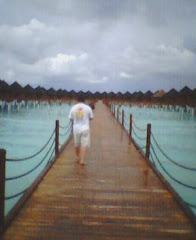It was still early in the afternoon when I had finished lunch at the Cup Noodles Museum. I decided to take a walk and wander around the Red Brick Warehouses. But right near the circle walk was the Japanese Overseas Migration Museum. Mikako and I had come here before but it was closed. Or at least we thought it was closed. I ventured another peek inside and discovered that the museum portion was further back in the building and since it was free I decided to take my time checking it out.
カップヌードルミュージアムでランチを食べ終わったらまだ時間があったので、赤レンガ倉庫に行こうと思った。でもサークルウォークの近くに気になったビルがあった。それは海外移住資料館。以前は美香子と一緒に来たこともあるが、その時は閉店と思い込んでた。また覗いてみようとビルに入った。そしたら資料館はもっと奥のほうにあったのを発覚。今日はゆっくり見よう。そして一番ありがたいことは入場券は無料!
The first item that you are drawn to is a replica of a float Japanese farmers entered in the Rose Festival in Portland, Oregon in 1920.
I thought I would save some time by providing you with the information from the museum itself.
上記のサインでは幕府時代(1866年)、日本国民が海外で出稼ぎや勉強の為初めてパースポートが作れる様になった。
The first wave of travelers were not really emigrants but contract laborers who were shipped to Hawaii to work on sugarcane plantations.
日本人が最初に海外いったのは移住ではなく出稼ぎの為。ハワイのさときび畑などの労働をしてた。
Aside from the contract laborers, the other travelers were students.
出稼ぎに行く人の他は大体留学生たちでした。
The first true Japanese emigrants settled in Brazil in an area called Arianca.
日本人初の移住民はブラジルのありあんさで新しい生活を始めました。
The emigrants left Japan by ship.
移住民は舟で日本を離れ。
The various types of luggage that the emigrants took with them.
移住民たちが海外で持って行った荷物。
Passport and household idols / パースポートや日本式の神々
こういう荷物時代感じますよね。
Projector and show films for the traveling cinema / 巡回シネマに使用してた映写機と映像フィルム
(Its what was written on the sign / サインにそう書かれてました)
I bet my father would love to have one of these.
うちのお父さんはこれ欲しくなるでしょう。
Medical instruments / 医療器具
Printing set / プリントセット
Got to be able to make their omochi overseas!
お餅作りの道具も忘れてはいけません!
To be continued...
つづく。。。






















.jpg)



No comments:
Post a Comment